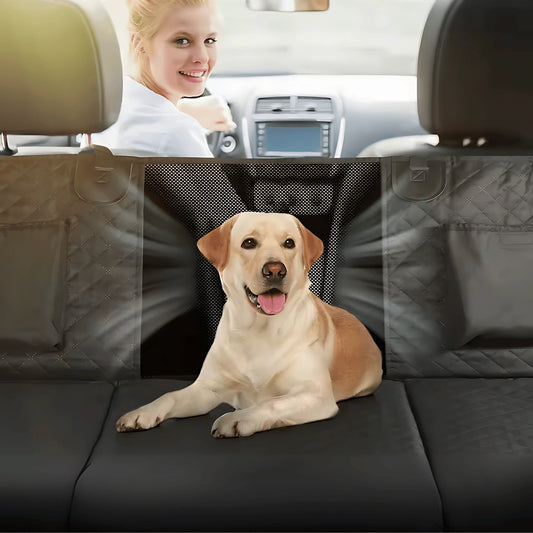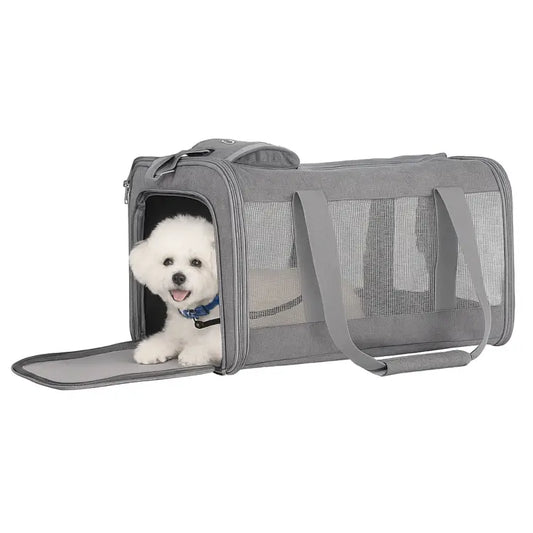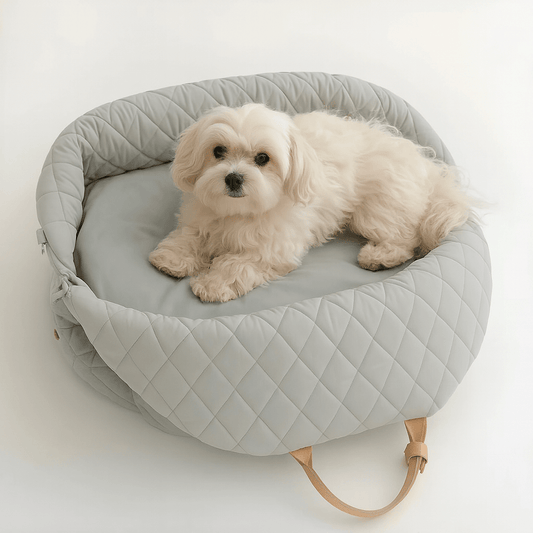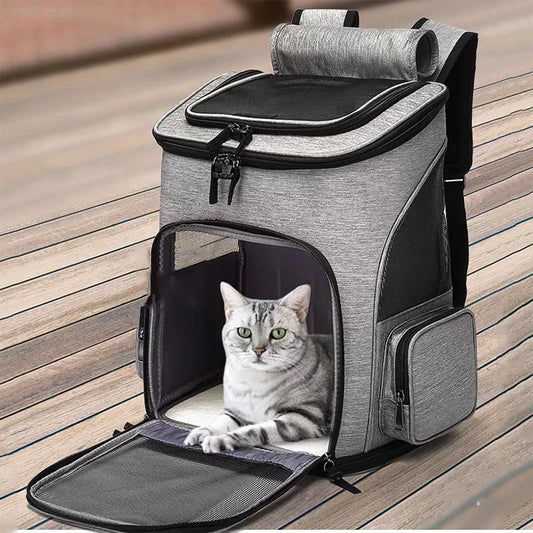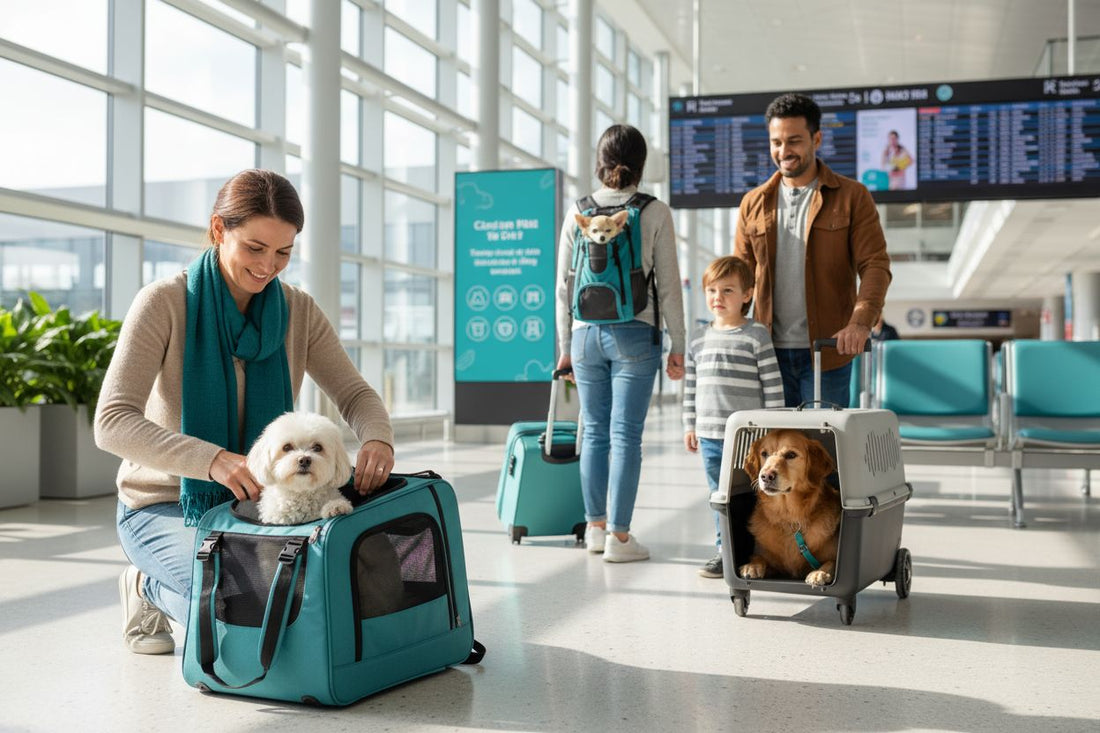
7 Best Dog Carriers for Travel: Comfort & Safety
Share
Finding the perfect dog carrier for travel can be a serious challenge and most people do not realize how much precision goes into it. You might think just any soft bag or crate will do, but that decision actually affects your pet’s comfort and safety on every trip. Measuring your dog from nose to tail and factoring in weight means the difference between stress and a safe journey according to leading veterinary groups. The details you overlook could make all the difference for your dog’s happiness while traveling.
Table of Contents
- 1: Understand Your Dog’s Size And Weight
- 2: Choose The Right Type Of Carrier For Your Needs
- 3: Look For Safety Features In Carriers
- 4: Check For Comfort Elements Like Padding
- 5: Consider Portability And Ease Of Use
- 6: Evaluate Carrier Durability And Material Quality
- 7: Read Customer Reviews For Real Experiences
Quick Summary
| Takeaway | Explanation |
|---|---|
| Measure your dog accurately | Accurate measurements ensure a carrier that fits snugly, enhancing comfort and safety during travel. |
| Choose the right carrier type | Selecting a carrier that suits your travel needs and your dog’s temperament leads to better experiences for both. |
| Prioritize safety features | Look for secure locks, durable materials, and ventilation to protect your dog from potential travel hazards. |
| Focus on comfort padding | High-quality padding can significantly enhance your dog’s travel comfort and reduce stress during journeys. |
| Assess durability and materials | Invest in carriers made from strong, weather-resistant materials for long-lasting use and reliability during travel. |
1: Understand Your Dog’s Size and Weight
Selecting the right dog carrier for travel begins with understanding your dog’s specific physical measurements. Most pet owners underestimate the critical importance of precise sizing when choosing a travel carrier. Your dog’s comfort, safety, and overall travel experience depend entirely on selecting a carrier that matches their unique dimensions.
Start by carefully measuring your dog’s length, height, and weight. You’ll want to capture measurements while your dog is standing naturally. Measure from the tip of their nose to the base of their tail for length, and from the floor to the top of their head for height. Use a flexible measuring tape for accuracy and ensure your dog remains calm during the process.
Key considerations when determining carrier size include:
- Body Weight: Different carriers are designed for specific weight ranges
- Standing Height: Ensures your dog can stand comfortably without crouching
- Body Length: Determines whether your pet can turn around and adjust positions
According to American Veterinary Medical Association, proper carrier sizing reduces stress and potential health risks during transportation. A carrier that is too small can cause significant discomfort, while an oversized carrier might not provide the necessary security during travel.
Most manufacturers categorize dog carriers into standard weight classes:
- Small Dogs: Under 10 pounds
- Medium Dogs: 10-25 pounds
- Large Dogs: 25-40 pounds
- Extra Large Dogs: 40+ pounds
Tips for accurate measurement include having a second person help hold your dog steady, using treats for cooperation, and measuring multiple times to confirm consistency. Dog Gear Review recommends adding an extra 2-3 inches to each dimension to ensure maximum comfort.
Beyond physical measurements, consider your dog’s temperament and travel style. Anxious dogs might prefer more enclosed, den-like carriers, while more relaxed pets could tolerate more open designs. By understanding your dog’s unique size and personality, you’ll make a more informed carrier selection that ensures safe, comfortable travel for your furry companion.
2: Choose the Right Type of Carrier for Your Needs
Selecting the appropriate dog carrier requires understanding the diverse range of transportation scenarios and your specific travel requirements. Each carrier type offers unique advantages designed to accommodate different travel modes, dog temperaments, and owner preferences.
Softside carriers excel in specific scenarios, providing flexibility and lightweight transportation options. They are typically preferred for air travel, public transportation, and shorter journeys. Fabric construction allows for easier storage and compact folding, making them ideal for travelers who prioritize portability.
Hardside carriers offer superior protection and structural integrity, particularly beneficial for longer trips or more anxious dogs. These carriers provide enhanced security and are often recommended by International Pet Travel Association for their durability and impact resistance.
Key carrier types include:
- Soft-sided fabric carriers: Lightweight and flexible
- Hard plastic travel crates: Maximum protection and durability
- Backpack carriers: Hands-free transportation for smaller dogs
- Rolling carriers with telescopic handles: Convenient for longer distances
Consider your primary travel needs when selecting a carrier. Frequent air travelers should prioritize airline-approved dimensions and materials. Road trip enthusiasts might prefer carriers with robust construction and secure seat belt attachments.
Pet Travel Safety Organization recommends evaluating several critical factors:
- Ventilation quality
- Weight distribution mechanisms
- Interior comfort features
- External durability
- Ease of cleaning
Additional specialized carriers cater to specific activities. Hiking enthusiasts might choose rugged, outdoor-oriented carriers with enhanced padding and weather resistance. Urban commuters could benefit from sleek, compact designs that integrate seamlessly with public transit systems.
Beyond physical characteristics, consider your dog’s individual temperament. Anxious dogs might require more enclosed, secure carriers, while confident pets could tolerate more open designs. By matching carrier type to both travel requirements and your dog’s personality, you’ll ensure a comfortable, stress-free transportation experience.
3: Look for Safety Features in Carriers
Safety should be the paramount consideration when selecting a dog carrier. Protecting your furry companion during travel requires a comprehensive understanding of essential safety features that prevent potential risks and ensure comfort.
International Pet Travel Safety Council emphasizes that a carrier’s structural integrity directly impacts your dog’s security. Quality carriers should provide multiple layers of protection through intelligent design and robust materials.
Critical safety features to evaluate include:
- Secure locking mechanisms that prevent accidental openings
- Reinforced structural frames to maintain carrier shape
Ventilation plays a crucial role in your dog’s safety and comfort. Proper airflow prevents overheating and reduces stress during transportation. Look for carriers with multiple mesh panels that allow consistent air circulation while maintaining visual contact with your pet.
Veterinary Transport Association recommends carriers with additional safety elements such as:
- Interior padding to reduce impact
- Adjustable safety straps
- Reflective exterior elements for nighttime visibility
Strength of materials becomes paramount, especially for dogs who might experience anxiety during travel. Tear-resistant fabrics and reinforced stitching prevent potential escape attempts and ensure long-term durability.
For those interested in advanced safety features, our guide on outdoor dog carrier solutions provides comprehensive insights into specialized travel gear.
Additional safety considerations include checking for sharp edges, ensuring smooth interior surfaces, and verifying that all zippers and closures function smoothly. Weight distribution mechanisms can also prevent strain during extended travel periods.
Ultimately, a well-designed carrier acts as a protective cocoon for your dog, minimizing external stimuli and providing a sense of security. By prioritizing these safety features, you transform a simple carrier into a trusted travel companion that keeps your pet secure and comfortable throughout any journey.
4: Check for Comfort Elements Like Padding
Comfort is not a luxury but a necessity when selecting a dog carrier for travel. The right padding can transform a potentially stressful transportation experience into a relaxing journey for your furry companion.
Canine Comfort Research Institute highlights that proper padding reduces physical stress and prevents potential joint and muscle strain during transportation. Memory foam and orthopedic materials have emerged as superior padding options for dogs of all ages and sizes.
Key comfort considerations include:
- Thickness of padding material
- Breathability of cushioning
- Ability to distribute weight evenly
The interior environment of a carrier plays a crucial role in your dog’s travel experience. Soft, washable padding that can be easily removed and cleaned ensures both hygiene and consistent comfort. Look for carriers with multi-layered padding that provides cushioning while maintaining structural integrity.
Veterinary Ergonomics Journal recommends evaluating padding based on several critical factors:
- Shock absorption capabilities
- Temperature regulation
- Moisture-wicking properties
- Resistance to compression
Different dog breeds and individual pets have unique comfort requirements. Senior dogs or those with joint issues might require extra supportive padding that reduces pressure points. Younger, more active dogs could benefit from slightly firmer materials that provide stability during movement.
For travelers seeking comprehensive comfort solutions, our guide on outdoor dog carrier options offers additional insights into advanced padding technologies.
Consider the padding’s relationship with ventilation. Breathable materials prevent overheating and ensure your dog remains comfortable across varying environmental conditions. Mesh panels integrated with padded sections create an optimal balance between support and air circulation.
Ultimately, superior padding transforms a carrier from a simple transportation tool into a mobile comfort zone for your pet. By prioritizing thoughtful, high-quality cushioning, you demonstrate a commitment to your dog’s physical and emotional well-being during travel.
5: Consider Portability and Ease of Use
Portability transforms a good dog carrier into an exceptional travel companion. Modern pet owners require carriers that seamlessly integrate with diverse transportation modes and lifestyle demands.
Transportation Accessibility Research Center emphasizes that truly effective carriers must balance lightweight design with robust functionality. Weight distribution and compact folding mechanisms become critical considerations for frequent travelers.
Key portability features to evaluate include:
- Total carrier weight
- Collapsibility and storage options
- Integrated carrying handles
- Compatibility with luggage systems
Ergonomic design plays a pivotal role in carrier usability. Look for carriers with strategically placed shoulder straps, padded handles, and smooth zipper systems that minimize friction during transport. Adjustable components allow customization to match individual user preferences and body types.
Pet Travel Mobility Institute recommends evaluating carriers based on multiple mobility criteria:
- Quick setup and breakdown times
- Ease of cleaning
- Smooth rolling capabilities
- Compact storage when not in use
For urban commuters and frequent travelers seeking versatile solutions, our guide on outdoor dog carrier options provides comprehensive insights into advanced portability features.
Technology has revolutionized carrier design. Lightweight materials like high-grade polyester and ripstop nylon offer durability without compromising weight restrictions. Innovative folding mechanisms allow carriers to transform from structured transport units to compact storage configurations within seconds.
Consider your specific travel scenarios. Airline travelers need carriers meeting strict dimensional requirements, while road trip enthusiasts might prioritize carriers with secure seat belt attachments and multiple entry points.
Ultimately, an ideal carrier becomes an extension of your travel strategy - effortless to maneuver, simple to maintain, and designed to reduce transportation stress for both you and your canine companion.
6: Evaluate Carrier Durability and Material Quality
Durability represents the foundation of an exceptional dog carrier, transforming a simple transport tool into a long-lasting travel companion. Material quality directly impacts a carrier’s ability to withstand diverse environmental challenges and repeated use.
Materials Science in Pet Transportation Journal reveals that advanced synthetic materials have revolutionized carrier construction. High-performance fabrics like ballistic nylon and ripstop polyester provide unprecedented resistance to tears, punctures, and environmental wear.
Key durability considerations include:
- Tensile strength of base materials
- Resistance to UV degradation
- Water and stain repellent capabilities
- Reinforcement at stress points
Industry experts emphasize the importance of comprehensive material testing. Quality carriers undergo rigorous stress evaluations that simulate potential real-world scenarios, including temperature fluctuations, mechanical strain, and prolonged use.
International Pet Equipment Standards Association recommends examining carriers based on multiple durability factors:
- Stitching integrity
- Zipper quality
- Frame material strength
- Resistance to pet-induced wear
For adventurous pet owners seeking ultimate durability solutions, our guide on outdoor dog carrier options offers insights into advanced material technologies.
Beyond physical strength, material quality impacts hygiene and maintenance. Antimicrobial treatments and easy-clean surfaces prevent bacterial growth and simplify post-travel maintenance. Look for carriers with removable, washable liners that maintain their structural integrity after multiple cleaning cycles.
Consider the carrier’s performance across different environments. Travelers encountering varied climates need materials that resist moisture, maintain color integrity, and prevent degradation from sunlight exposure. Specialized coatings can enhance a carrier’s protective capabilities, extending its functional lifespan.
Ultimately, investing in a high-quality carrier is an investment in your dog’s travel comfort and safety. By prioritizing superior materials and construction, you ensure a reliable, long-lasting travel solution that adapts to your adventurous lifestyle.
7: Read Customer Reviews for Real Experiences
Customer reviews represent the most authentic window into a dog carrier’s real-world performance. Beyond manufacturer specifications, these firsthand accounts provide nuanced insights that transform purchasing decisions from guesswork to informed selection.
Consumer Experience Research Center emphasizes that comprehensive review analysis unveils critical details manufacturers might not highlight. Detailed customer narratives expose practical strengths and potential limitations that technical specifications cannot capture.
Key review evaluation strategies include:
- Looking beyond star ratings
- Identifying recurring themes
- Analyzing verified purchase reviews
- Comparing experiences across different dog breeds
Experienced travelers understand that genuine reviews offer more than product assessment. They provide context about carrier performance in diverse scenarios: airport security, road trips, hiking adventures, and daily commutes.
Global Consumer Insights Platform recommends examining reviews through multiple perspectives:
- Long-term durability reports
- Detailed comfort observations
- Unexpected usage scenarios
- Comparative experiences with alternative carriers
For travelers seeking comprehensive review insights, our guide on outdoor dog carrier options offers additional review evaluation strategies.
Critical review elements extend beyond product performance. Pay attention to seller responsiveness, return policies, and customer support experiences. Reviews revealing how manufacturers handle potential issues can be as valuable as product descriptions.
Watch for reviews from owners with dogs similar to yours. A carrier that works perfectly for a calm Labrador might prove unsuitable for an anxious Chihuahua. Breed-specific insights provide targeted, practical guidance.
Ultimately, customer reviews transform purchasing from a transaction into a community-informed decision. By carefully analyzing diverse experiences, you gain a holistic understanding that transcends marketing language, ensuring you select a carrier perfectly matched to your dog’s unique travel needs.
Below is a comprehensive table summarizing the key steps, features, and benefits discussed in the article to help you select the best dog carrier for travel.
| Step / Feature | Key Details and Considerations | Benefits for Dog and Owner |
|---|---|---|
| Measure Dog Size and Weight | Measure length (nose to tail), height (floor to head), and confirm weight class; add extra room for comfort. | Ensures correct fit, comfort, and travel safety |
| Choose Carrier Type | Select from soft-sided, hardside, backpacks, or rolling carriers based on travel style, dog temperament, needs. | Matches travel scenarios and dog’s personality |
| Prioritize Safety Features | Look for secure locks, reinforced frames, mesh ventilation, and reflective elements. | Enhances pet security and prevents accidents |
| Check for Comfort Padding | Assess memory foam, orthopedic or washable padding; ensure breathability and shock absorption. | Reduces stress, joint strain, and travel discomfort |
| Consider Portability and Usability | Evaluate weight, foldability, ergonomic handles/straps, and luggage compatibility. | Makes transport easier and less stressful for owners |
| Evaluate Durability and Material Quality | Prefer ballistic nylon or ripstop polyester; check stitching, UV and water resistance, easy-clean features. | Longer lifespan and reliability in varied conditions |
| Read Customer Reviews | Analyze authentic user experiences, especially those from owners with similar dogs and travel patterns. | Reveals real-world performance and practical insights |
Find the Best Carrier for Safe and Comfortable Travels
Worried about whether your dog’s next trip will be safe and stress-free? After reading about the importance of size, comfort, durability, and airline approval in the article “7 Best Dog Carriers for Travel: Comfort & Safety,” you already know how choosing the wrong carrier can lead to discomfort or even safety risks for your pet. At YappyBoo, we make it easy to find the perfect match, from airline approved dog carriers designed for in-cabin travel to hiking backpacks and outdoor carriers built for all kinds of adventures. Our collection focuses on lightweight, sturdy, and safety-first features, so your dog can travel in comfort with complete peace of mind.
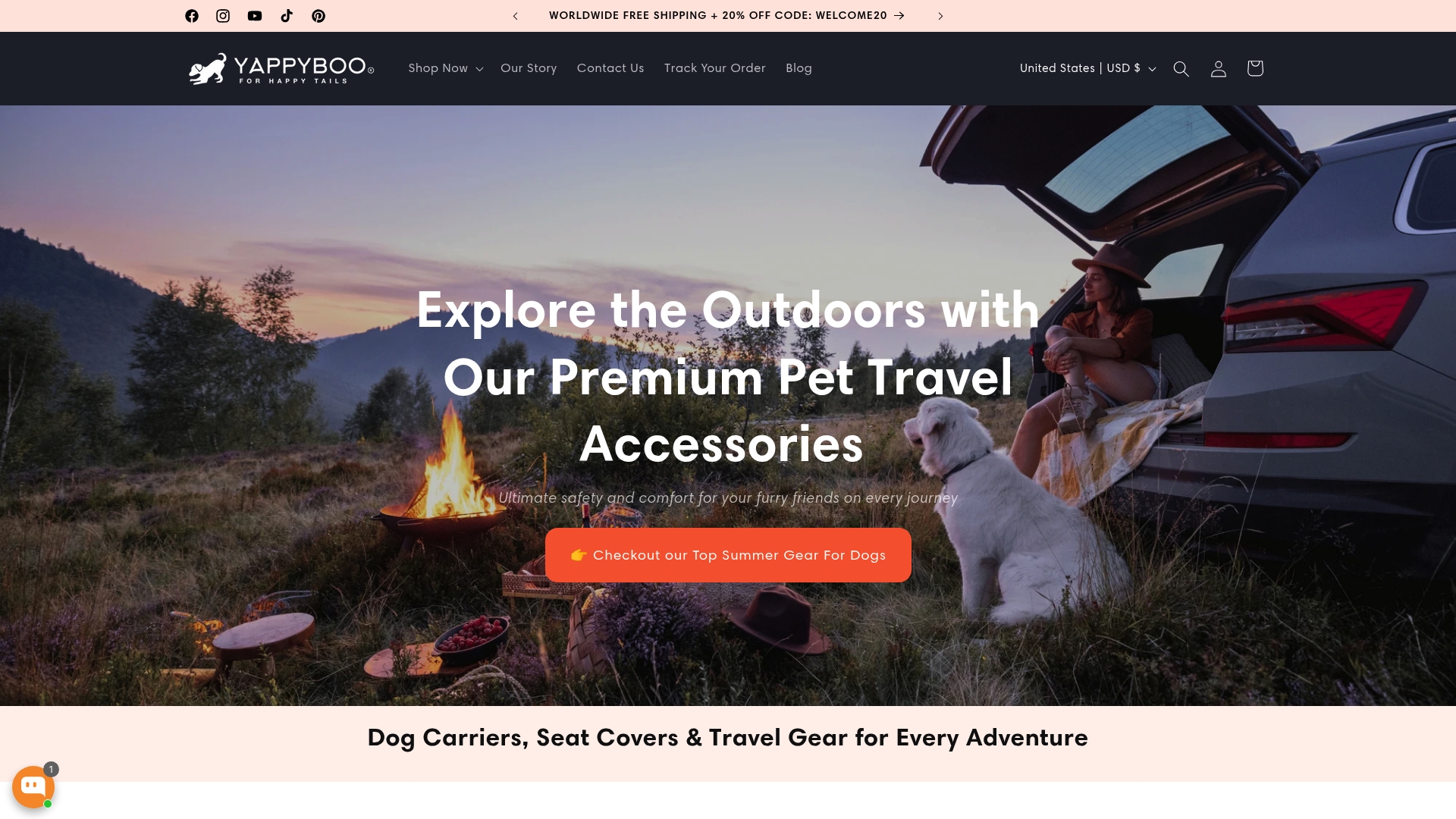
Start your search now at YappyBoo.store and experience exclusive deals, authentic customer reviews, and secure shopping. Choose a carrier that fits your dog’s needs and see how easy pet travel can become when you give them the comfort and protection they deserve.
Frequently Asked Questions
What size dog carrier do I need for my dog?
To determine the appropriate size dog carrier, measure your dog’s length from the tip of their nose to the base of their tail and their height from the floor to the top of their head. Common sizes are categorized by weight: under 10 pounds for small dogs, 10-25 pounds for medium dogs, 25-40 pounds for large dogs, and over 40 pounds for extra-large dogs.
What materials are best for dog carriers in terms of durability?
The best materials for dog carriers include high-performance fabrics like ballistic nylon and ripstop polyester, which provide resistance to tears, punctures, and environmental wear. Additionally, carriers should have reinforced stitching and strong zippers for added durability.
What safety features should I look for in a dog carrier?
Key safety features to look for include secure locking mechanisms, reinforced structural frames, multiple mesh ventilation panels, interior padding to reduce impact, and reflective elements for nighttime visibility. These features ensure your dog’s comfort and security during transport.
How does padding affect the comfort of a dog carrier?
Proper padding significantly impacts your dog’s comfort by reducing physical stress and preventing joint strain during travel. Look for carriers with soft, washable padding that is breathable, shock-absorbing, and capable of distributing weight evenly to provide a comfortable travel experience.


